Garden Medicinals
Did you know that many of the garden plants you are already familiar with have been traditionally used for healing?
Florida is home to many medicinal plants, both native and non-native, and we have compiled a list of some that are commonly found in home gardens.
Of course, the purported benefits of these plants are still being researched and should only be considered as possibilities, not guarantees. At the end of most summaries, you can find a link to the National Institutes of Health (NIH) review of the plant. There, you can learn more about current research and make sure that using the plant will not conflict with any preexisting conditions or medications. Always be sure to consult with a medical professional before consuming or using medicinal plants to improve human health.
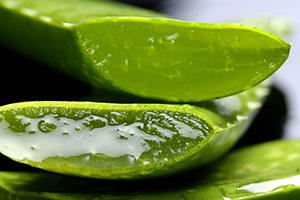
Aloe (Aloe vera)
Aloe is a helpful succulent to have on hand during the summer months! The leaves are useful for relieving burns, and the plant is quite easy to grow. Although it’s up for debate as to whether aloe actually helps with healing, the cooling sensation provided by applying the split open leaf to the injury helps make recovery more comfortable.
NIH Information: Aloe Vera

Skullcap (Scutellaria spp.)
Skullcap is a member of the mint family that is commonly grown as an ornamental and as a medicinal. You can easily find it in tea blends since it is believed to help with anxiety. Skullcap is often grown for its pretty purple flowers, long blooming season, and drought tolerance. The purported medicinal benefits are linked to the flavonoids found in the leaves and roots. Interestingly, UF research discovered that plants grown under difficult conditions (such as water stress) increased the production of these flavonoids.
From UF/IFAS: Florida Medicinal Garden Plants: Skullcap (Scutellaria spp.)
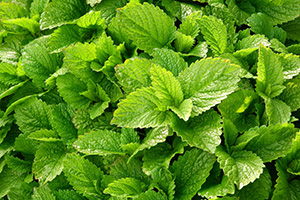
Lemon Balm (Melissa officinalis)
Lemon balm is another mint family member that is grown as an herb for teas and flavorings. The perennial plant is also used to attract bees for honey production. Lemon balm contains rosmarinic acid, which may help relieve stress and anxiety, and when applied topically, even treat cold sores. When mixed with valerian root, it can also provide a mild sedative effect.
From UF/IFAS: Medicinal Plant of This Week, Lemon Balm
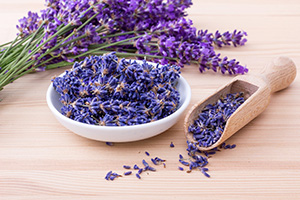
Lavender (Lavandula angustifolia)
Lavender is quite popular as a flavoring, but it also is promoted to help with anxiety, depression, and digestive issues. Additionally, it is used for aromatherapy. Lavender is relatively low-maintenance and grows best in a dry, sunny spot. To harvest the flowers for use, pick them before they open and then dry them before storing.
NIH information: Lavender
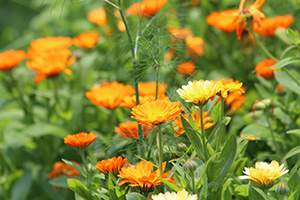
Calendula (Calendula officinalis)
Calendula is also known as pot marigold, but it is a different plant than ornamental marigold. It is prized for its cheerful, daisy-like flowers that are edible and can be used to make dye. Medicinally, calendula is used to treat wounds, rashes, infections, inflammation, and other conditions. Calendula is a cool-season annual, so you can incorporate it into your winter garden to add a pop of color NIH information: Calendula
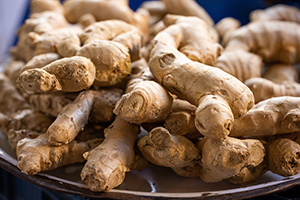
Ginger (Zingiber officinale)
Unlike some of the other medicinal plants, ginger has been extensively researched. The results show that ginger may help pregnant women with mild nausea and vomiting. A few studies have also suggested that ginger may ease menstrual cramps. For it to thrive, plant ginger in well-drained, rich soil in a shady area. Rhizomes should be planted in the spring and harvested in the fall as plant leaves deteriorate.
NIH Information: Ginger
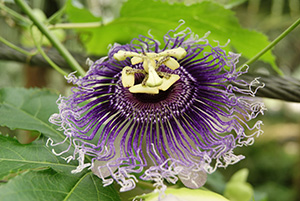
Passion Flower (Passiflora incarnata)
This native vine has gorgeous purple blooms that may also have medicinal properties. Passion flower is promoted for anxiety and sleep issues, pain relief, heart rhythm problems, menopausal symptoms, and ADHD. It can also be applied in a topical formula to sooth burns. Plant passion flower in full sun at the base of a fence, trellis, or arbor with plenty of space for it to spread out.
NIH information: Passionflower
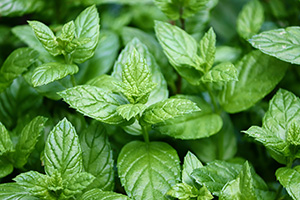
Peppermint (Mentha x piperita) and Spearmint (Mentha spicata)
Mint isn’t just for mojitos; it may also have medicinal properties! Spearmint is promoted for memory, digestion, osteoarthritis, and other conditions. Peppermint (pictured) is believed to help digestive issues, colds, sinus infections, headaches, and other afflictions. Mint loves to spread, so plant it in a container to prevent it from taking over your yard.
NIH information: Peppermint Oil and Spearmint

Roselle (Hibiscus sabdariffa)
Roselle tea is both tasty and potentially helpful for lowering blood pressure. It may also help reduce sugar and fat levels in the blood, reduce swelling, and act as an antibiotic. Plant roselle in April or May, and again in August in a sunny location. It thrives in well-drained soil with irrigation during drought.
NIH information: Hibiscus sabdariffa
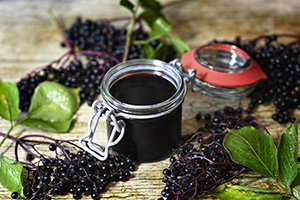
Elderberry (Sambucus nigra)
Used to make jams, syrups, and pies, native elderberry may also help with colds, the flu, or other respiratory infections. Make sure you follow directions to prepare the fruit properly before consuming since the leaves and berries are toxic when raw. Plant elderberry in moist, rich soil in a location with full sun.
NIH information: Elderberry
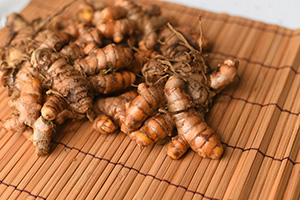
Turmeric (Curcuma longa)
Used in many Asian, East African, and Caribbean dishes, turmeric is now being researched for its potential anti-inflammatory properties. It may help arthritis, digestive issues, respiratory infections, allergies, liver disease, depression, and the list goes on. Planting turmeric is easy; all you need is a piece of fresh root from the grocery store. The best time to plant is early in the spring, and the ideal location has partial to full sun with rich soil.
NIH information: Turmeric
For more information on growing medicinal plants in your area, please contact the experts at your local county Extension office.
Also on Gardening Solutions
- Aloe Vera
- Calendula
- Edible Flowers
- Elderberry
- Ginger
- Herbs in the Florida Garden
- Mint
- Passion Flower
- Roselle
- Turmeric
More from UF/IFAS
- Florida Medicinal Garden Plants: Skullcap (Scutellaria spp.)
- Ginger, Galangal, and Turmeric Production in Florida
- Lavandula angustifolia Lavender, English Lavender
- Medicinal Plant of This Week: Lemon Balm – UF/IFAS Blogs St. Lucie County
- The Antioxidant Power in Herbs and Spices — UF/IFAS Blogs Marion County
